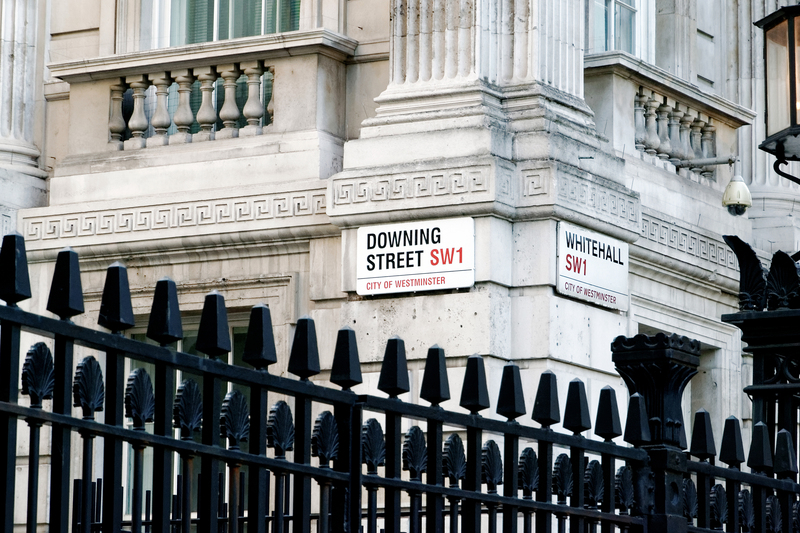The Art of Piano Moving: Why It's Not a DIY Task
Posted on 18/05/2025
The Art of Piano Moving: Why It’s Not a DIY Task
Pianos are majestic instruments, celebrated for their rich sounds and elegant designs. Yet, lurking behind the beauty of every grand, upright, or baby grand piano is a logistical challenge: moving it safely and efficiently. Many homeowners, inspired by DIY culture, might consider relocating their own piano when moving homes, redecorating, or simply rearranging their space. However, piano moving is a specialized art – one that requires skill, planning, and professional equipment. If you're considering moving a piano yourself, it's crucial to understand the unique difficulties and dangers involved. This article explores why moving a piano is not a DIY task, the risks associated with a do-it-yourself approach, the expertise of professional piano movers, and tips for finding trusted experts in the trade.

What Makes Piano Moving So Challenging?
Understanding the Unique Structure and Weight of Pianos
Pianos are not just heavy objects; they are complex, delicate, and intricately engineered musical instruments. Here’s what you need to know:
- Weight and Size: Pianos can weigh anywhere between 300 to 1,400 pounds (136 to 635 kg), depending on whether it is a spinet, upright, grand, or concert grand piano.
- Delicate Parts: Inside a piano are thousands of moving parts, including strings, hammers, and action mechanisms, all finely tuned and sensitive to bumps and drops.
- Irregular Shape: Unlike typical pieces of furniture, pianos have irregular dimensions, weight distribution, and often include protruding or fragile elements such as pedals, legs, and music stands.
The Risk of Damage – To the Piano and Your Home
The danger doesn't just lie in the piano’s weight. The real risk emerges from its structure. A minor mishap can cause:
- Irreparable internal damage, affecting the sound, action, and tuning of your piano.
- Scratches, dents, or cracks to the piano’s finish, which can be costly and difficult to restore.
- Damage to floors, walls, and doorways during the maneuvering process.
- Injury to yourself or others due to mishandling, slipping, or dropping the piano.
Why Pianos Require Specialized Moving Techniques and Equipment
Unlike conventional items, pianos cannot be lifted, shifted, or rolled with generic tools. Professionals use:
- Heavy-duty piano dollies, skids, or boards engineered for different piano types.
- Protective padding and moving blankets to safeguard both the instrument and property.
- Specialized strapping and lifting techniques to evenly distribute the piano’s weight and prevent internal damage.
- Custom-sized ramps and hoisting equipment for navigating stairs, tight spaces, or raised surfaces.
The Dangers of DIY Piano Moving
Injury Risks: Why Safety Should Be Your First Concern
Attempting to move a piano without adequate expertise can result in serious injuries such as:
- Back strains and muscle injuries: The awkward shape and immense weight put immense pressure on your body.
- Pinched fingers, crushed toes, or even broken bones from mishandling or accidental drops.
- Risk of falls on stairs or slippery floors, with potentially disastrous consequences.
Emergency rooms across the country often see injuries related to improper moving techniques. Pianos are notorious for causing both minor and major accidents.
Financial Setbacks from Damage
Beyond the health risks, a botched DIY piano move can lead to:
- Expensive repairs for the piano’s inner mechanisms or outer casing.
- Potential devaluation of your valuable musical instrument if it loses its finish or tone.
- Property damage to your floors, stairs, doorways, trim, or even other furniture.
- Insurance complications: Many homeowners’ insurance policies do not cover DIY moving damage, especially for high-value items like pianos.
When considering the true cost of a piano move, it becomes evident that hiring professional movers is a wise investment.
What Sets Professional Piano Movers Apart?
Training, Experience, and Technique
Professional piano movers are not just strong laborers; they are skilled technicians dedicated to the art of piano moving. Here’s what distinguishes them:
- Training in lifting and balancing heavy, awkward items, ensuring both safety and instrument integrity.
- Experience navigating tight corners, narrow staircases, elevators, and other obstacles without damaging the piano or property.
- Ability to dismantle and reassemble legs, pedals, and music stands as needed for safe, secure transport.
- Meticulous use of gloves, padding, and protective wraps to prevent scratches and preserve the finish.
Access to Specialized Tools and Insurance
Another major advantage of hiring professionals for piano relocation is their access to the proper equipment and coverage:
- Piano boards and heavy-duty dollies designed specifically for grand and upright pianos.
- Ramps, hydraulic lifts, and even cranes for multi-story or balcony moves.
- Comprehensive insurance that protects both your instrument and your home against accidental damage.
- Availability of climate-controlled vehicles for safe long-distance or seasonal moves, maintaining the piano’s stability and tone.
Step-by-Step Precision: The Professional Piano Moving Process
Professional piano movers follow a thorough process to ensure your valuable investment arrives safe and sound:
- Assessment and Planning: Reviewing the layout, measuring all entrances, and planning the best route for safe passage.
- Preparation: Wrapping and padding the piano, dismantling parts if necessary, and securing all movable components.
- Transport: Using coordinated team effort to lift, slide, and carefully maneuver the piano onto a dolly or moving board.
- Execution: Navigating through doors, halls, and stairs with constant attention to angles and pressure points.
- Safe Placement: Reassembling parts and placing your piano in its new location, followed by a visual and functional inspection.
Understanding the Types of Piano Moves
Residential Piano Moving
Whether moving from room to room or to a new house, residential piano moving presents unique challenges:
- Often requires tight turns, stair navigation, delicate flooring, and stair lifts.
- May involve multi-level homes, requiring disassembly or customized equipment.
Commercial and Venue Piano Relocation
Pianos in schools, theaters, churches, or concert halls must be moved with extreme care due to their frequent use and public visibility. Professionals are skilled at accommodating event schedules, deadlines, and high-value, rare instruments.
Long-Distance and International Piano Moving
Transporting a piano over longer distances introduces new concerns, including climate changes, vibration damage, and the strict scheduling required for air and sea freight. Only seasoned movers have the resources and contacts to coordinate such complex relocations without risking your instrument.
Common Mistakes in DIY Piano Moving (and Their Consequences)
- Underestimating the Weight: Many DIY movers believe a few strong individuals can handle the weight, overlooking the risk of dropped or overturned pianos.
- Improper Equipment: Attempting a move with furniture dollies, skateboards, or makeshift straps often leads to loss of control and subsequent damage.
- Ignoring the Need for Tuning: After any move, a piano typically requires professional tuning. DIY movers often forget, leading to poor sound quality and further internal stress.
- Unsafe Routes: Misjudged clearances or structural weak points in stairs or floors can result in property damage or injury.
- Inadequate Manpower: Enlisting untrained friends increases the likelihood of injury and loss of control.
The Benefits of Professional Piano Moving Services
Peace of Mind and Security
With a reputable piano mover, you enjoy:
- Knowledge your precious instrument is in safe, experienced hands.
- Insurance against unexpected accidents, offering financial protection.
- Proven expertise, ensuring both property and piano are protected throughout the process.
Long-Term Preservation of Your Instrument
Pianos are often heirlooms or significant investments. A poorly executed move can impact their:
- Tonal quality and action.
- Resale or appraisal value.
- Lifetime playability and enjoyment.
Reduced Stress and Hassle
Leave the heavy lifting and logistical headaches to the professionals, so you can focus on settling into or setting up your new space. Most jobs are completed faster and with significantly less disruption compared to DIY methods.

Choosing the Right Piano Moving Company
When looking for a reputable piano mover, keep these essential tips in mind:
- Seek out companies with dedicated piano moving experience, not just general movers.
- Check reviews, ask for references, and research any industry certifications or affiliations.
- Ensure they carry adequate insurance and bonding for the full value of your instrument.
- Ask about the specific equipment and process they use for the move.
- Obtain a written estimate after an in-person or virtual inspection of your piano and premises.
Conclusion: Piano Moving is an Art Best Left to the Experts
The art of piano moving is about much more than sheer strength; it demands knowledge, experience, specialized tools, and an unwavering commitment to safety and preservation. Attempting it yourself risks potential damage to your cherished instrument, financial loss, and even personal injury. By entrusting your piano to professional piano movers, you safeguard both the music and memories your instrument embodies.
Remember: When it comes to moving a piano, it’s not just furniture. It’s a finely tuned, heavy, and delicate musical marvel. If you want it to look and sound its best for years to come, don’t make piano moving a DIY project – leave it to the experts.
FAQs: The Art of Piano Moving
- Q: Can regular movers handle a piano safely?
A: It’s best to choose a company with specific experience in piano moving, as regular movers may lack the knowledge, equipment, and insurance necessary to handle such a delicate and valuable item. - Q: Will my piano need tuning after it’s moved?
A: Yes, most pianos need professional tuning after relocation due to vibration and slight changes in humidity or positioning. Schedule a tuning after your move is complete. - Q: How much does professional piano moving cost?
A: The cost varies depending on size, distance, access difficulties, and instrument type. Always request a detailed, written quote before authorizing the move.
For the safe transport of your beloved piano, always choose a skilled, professional piano mover. The integrity of your instrument – and everyone’s safety – depends on it.



